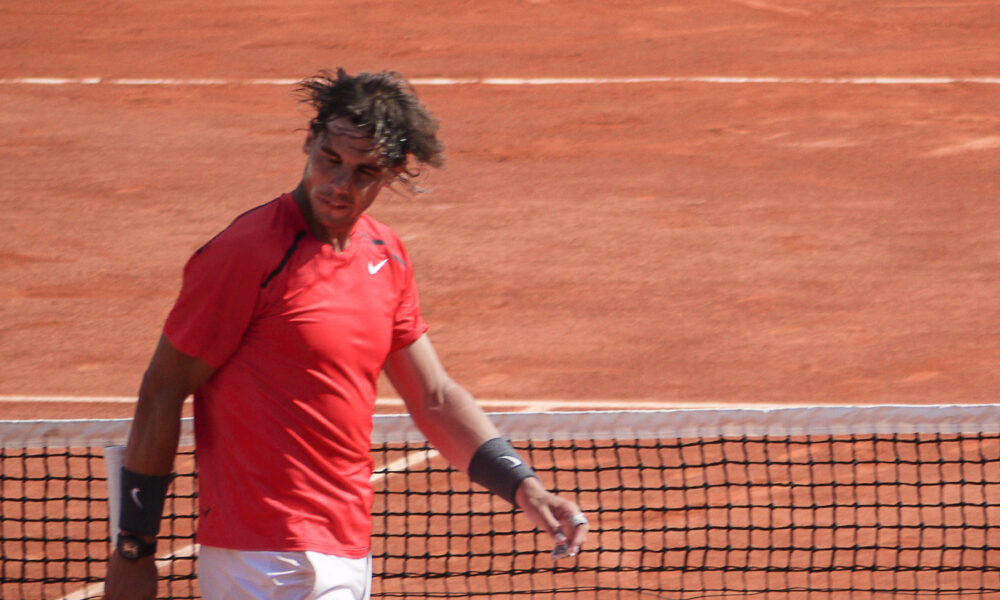The French Open had a new date and a new roof, but Rafa Nadal’s coronation was never in doubt. Even in these most uncertain of times we can rely on Nadal to win on clay.
Rafael Nadal stormed to a record 13th Roland Garros title on Sunday as he brushed aside Novak Djokovic as if he was an unknown qualifier let alone the current world number one. I’d be lying if I said that the scoreline of 6-0, 6-2, 7-5 wasn’t staggering to see between two greats of the game but given Nadal’s dominance on the red dirt it was almost unsurprising.
His win drew him level on grand slams with Roger Federer whilst also marking a century of victories in the French capital. Only the two losses and one walkover in all the 16 years he’s appeared at the grand slam that is like a second home to him.
Djokovic put up a fight in the final set but Nadal dug deep to see out the victory; he sank to his knees with joy after hitting an ace on championship point.
It was always going to be an uphill battle for the Serb, regardless of his form and ability – playing Rafa on clay is notoriously difficult. Novak should know. He’s one of just two men to beat the Spaniard at Roland Garros.
The other man will probably be unfamiliar to most sports fans. Robin Söderling, a Swedish player who was forced to retire from the sport aged just 26 after contracting a form of glandular fever in 2011.
Söderling was the first man to defeat Nadal at Roland Garros, halting his 31 game winning streak at the tournament and denying him of five straight titles. The Swede beat the then first seed in the fourth round, 6-2,6-7,6-4,7-6, stunning the tennis community in the process.
He’d ultimately lose in straight sets to Roger Federer in the final but the 23rd seed had ensured that his name would go down in history by doing what no one had done before and knock the king of clay out of his own palace.
As previously mentioned, Djokovic is the other man to beat Rafa when playing him on the courts of Roland Garros. It didn’t help him this weekend but he was firing on all cylinders back in the spring of 2015. A straight sets win for the Serb came during a spell in his career when he won five out of six straight grand slams. The exception was that French Open, as after all the effort put into beating Nadal, eighth seed Stan Wawrinka would deny him at the final hurdle.
The only other time that Rafa has not been the last man standing came in 2016, when he was forced to withdraw due to a wrist injury that blighted the remainder of his season.
So what does it take to beat Nadal at Roland Garros?
Well clearly Djokovic’s victory came during an incredible purple patch, if not the best spell of his career. He had the belief and ability to beat Nadal over the space of five sets too which is key, numerous players have beaten Nadal on clay over three sets but to do it at a grand slam requires a lot more mentally.
Similarly, with Söderling, many have said he found a zone where he was essentially untouchable. What’s more, the conditions worked in his favour that day – it was cool and overcast, nullifying Rafa’s ability to dominate on the dirt.
You see, one of the reasons Nadal can dominate on the dirt is because it’s a slower surface that causes the ball to bounce higher. The Spaniard exerts so much spin onto the ball that his opponents find it difficult to hit winners because of where they have to make contact with the ball. Add into the mix Nadal’s unrivalled athleticism and it’s almost as if he floats across the court, returning shot after shot. Now, if the climate is cooler, the ball bounces lower and thus making it easier to deal with Nadal’s shots.
That brings us back to today, a cool October day in the French capital – why didn’t Djokovic even get a sniff at the title? Well, it has to be said that Söderling didn’t just win because of the weather back in 2009. He made very few mistakes, converted his chances and was fortunate that the conditions did favour him. Meanwhile, in this year’s final, although the conditions may have made Nadal’s weapons slightly less potent, he didn’t let it affect him in the slightest. In fact, he was perhaps more ruthless than ever before.
The Spaniard was everywhere, not evening letting Djokovic get a game on the board until the second set. You have to be at a minimum of 100 per cent to beat Rafael Nadal over five sets on clay. Two losses in 16 seasons tell you that.
Not too long ago, Djokovic was comically asked in an interview, who he would pick to win a set to save his life. He said Nadal at Roland Garros. After Sunday’s final, me too.
By Pete Trifunovic

